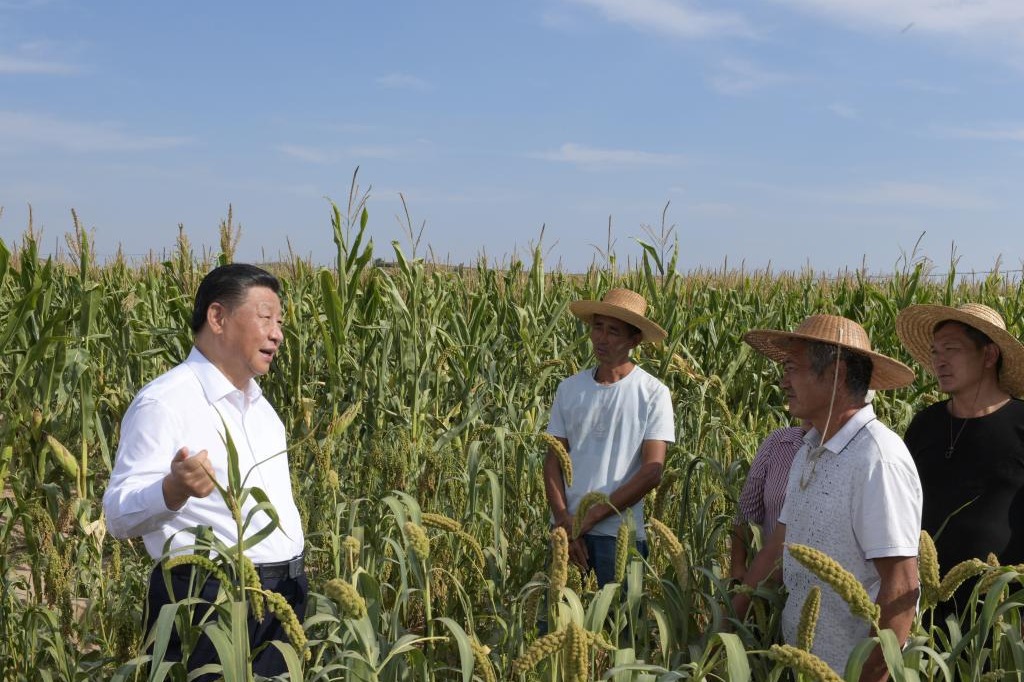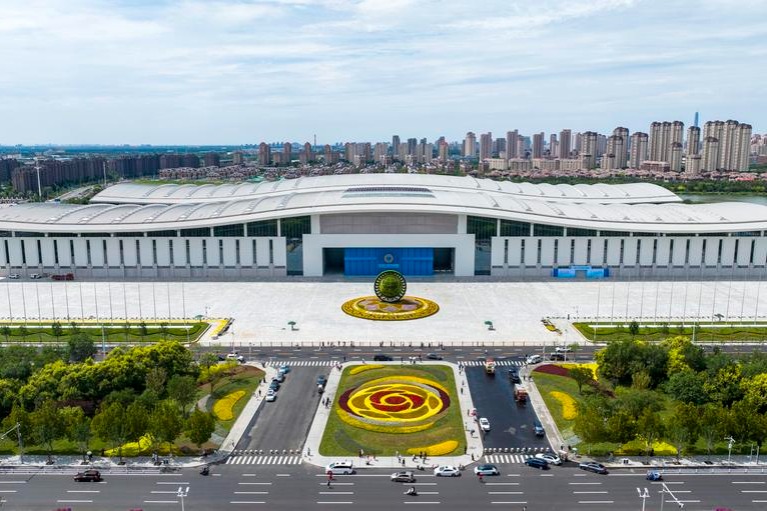Close friendship and common interests
Relations between Saudi Arabia and China have been on an upward trend since 1990 based on trust, mutual respect, common interests and the promotion of cooperation


Relations between Saudi Arabia and China have been on an upward trend since 1990 based on trust, mutual respect, common interests and the promotion of cooperation
Communication among people is the historical legacy of their relations. Many historians and researchers assert that communication between China and the Arabian Peninsula, of which two-thirds of the geographical area is occupied by the Kingdom of Saudi Arabia, began more than 2,000 years ago, considering the location of the Arabian Peninsula between the East and the West, located on the ancient Silk Road trade routes between the Mediterranean and the Far East. This communication greatly contributed to building a common understanding of the respective culture, customs and traditions between the Arab and Chinese civilizations. This understanding formed a deep positive perception of each other by both civilizations, in addition to the common values represented in morals, the authenticity of national identity, community cohesion and cultural diversity. At the present time, it can be said that the common denominators between them formed the pattern of Saudi-Chinese relations.
Saudi-Chinese relations are based on three foundations: mutual understanding, mutual benefits and solid trust. Both countries established diplomatic relations in 1990. Since then, relations between Saudi Arabia and China have been developed in various aspects of cooperation and coordination in the political, economic, trade, culture, investment and other fields. The relations of the Kingdom of Saudi Arabia and the People's Republic of China are close and distinguished, and they are moving at an accelerated and developing pace toward more cooperation and mutual understanding. It is also characterized by being aligned with the developments taking place in the world.
This significant milestone between the two countries will be summarized in three phases since the establishment of Saudi-Chinese relations in 1990. In the first phase since the end of the 1990s until the present, the pace of improvement in relations between Saudi Arabia and China has accelerated, and high-level visits between officials of the two countries culminated in the visit of King Abdullah bin Abdulaziz to China when he was crown prince in October 1998, followed by another visit in January 2006, which was his first visit outside the Middle East region after he became the king in August 2005. It was also the first visit by a Saudi monarch to China after the establishment of diplomatic relations between Saudi Arabia and China in 1990. In addition, President Xi Jinping visited Saudi Arabia in June 2008, when he was vice-president, on the invitation of Crown Prince Sultan bin Abdulaziz Al Saud.
In the second phase, King Salman bin Abdulaziz Al Saud visited the People's Republic of China in 1999, when he was the governor of Riyadh region. And he made his second visit in 2014, when he was Crown Prince. His third visit was in March 2017, when he was received by President Xi in the Great Hall of the People, and he expressed his pride in the level of bilateral relations and the joint cooperation between Saudi Arabia and China in the speech he delivered during his visit, referring to the important economic transformations that Saudi Arabia and China are going through, which has provided great opportunities to strengthen the close ties between them. He also mentioned, "We hope that the strategic cooperation between Saudi Arabia and China will contribute to strengthening international efforts to combat extremism and terrorism as a global threat, and to achieving international peace and security." He looked forward to transferring the relations between the two countries to broader fields and horizons, especially in the economic fields.
In the third phase, President Xi made a historic official visit to Saudi Arabia in 2016, and during his meeting with King Salman bin Abdulaziz Al Saud, the two leaders agreed to establish a high-level joint committee headed by His Royal Highness Crown Prince and Prime Minister Muhammed bin Salman and Chinese Vice-Premier Han Zheng. Since then, Saudi-Chinese relations have witnessed steady growth and development, as a high-level joint committee has contributed greatly to strengthening the foundation for relations and boosted the bilateral growth across all fields.
The high-level Saudi-Chinese joint committee is unique in international relations, and there are a group of factors that play a positive role in strengthening relations between Saudi Arabia and China, which ultimately leads to mutual benefit for the two countries, the foremost of which is the harmonization between the "Saudi Vision 2030" and China's Belt and Road Initiative. Both countries are working toward creating harmony and mutual benefits that will contribute to enhancing the comprehensive strategic partnership that is in the interest of the two friendly countries.
The Kingdom of Saudi Arabia announced its strategic project represented by "Saudi Vision 2030" in 2016, which is sponsored and supervised by His Royal Highness the Crown Prince, as it was built for the future of Saudi Arabia to strengthen its position as a major engine of international trade, linking the continents of Africa, Asia and Europe and using its investment power to create a more diverse and sustainable economy.
President Xi launched the Belt and Road Initiative in 2013, which is a strategic project that aims, among its multiple objectives, to build a network of railways, roads, and economic zones that will have a significant positive impact on the development of global trade and economy.
Saudi Vision 2030 and the Belt and Road Initiative aim to enhance trade exchanges among different countries, create paths for the transport of goods, as well as trade in goods and services and cultural, sports and tourism exchanges. Moreover, both initiatives aim to facilitate the movement of international investments and trade.
Despite the importance of the political aspect in Saudi-Chinese relations, the economic aspect is more significant to both sides. Saudi Arabia was China's first trading partner in the Middle East and North Africa region, similarly Saudi Arabia ranks first among oil-exporting countries to China, while China was also Saudi Arabia's first trading partner.
According to the latest economic figures, the volume of trade between Saudi Arabia and China during the first 10 months of 2022 exceeded $97 billion, an increase of 37.4 percent compared to the same period in the previous year. In addition, Saudi exports to China in that period exceeded $66 billion, an increase of 45 percent, while China's exports to Saudi Arabia exceeded $30 billion, an increase of 23.3 percent.
Saudi Arabia and China are two important and influential members of the G20, a group of countries that account for 85 percent of the global GDP and more than 70 percent of the world trade volume. They are also members of several international and regional organizations, and this presence requires the two countries to have more coordination and cooperation in bilateral and international issues.
Relations between Saudi Arabia and China have been on an upward trend since 1990 based on trust, mutual respect, common interests and the promotion of cooperation across all fields.
The author is the ambassador of Saudi Arabia to China. The author contributed this article to China Watch, a think tank powered by China Daily. The views do not necessarily reflect those of China Daily.
Contact the editor at editor@chinawatch.cn


































